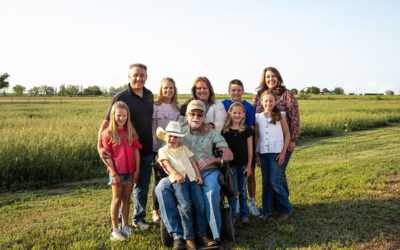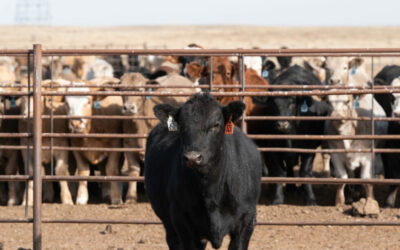
CAB premiums at seven-year high
Biannual packer survey shows cumulative contribution at $352 million
by Steve Suther
Demand for the Certified Angus Beef ® (CAB®) brand surged higher in 2011, which helps explain a 40% jump in packer-reported CAB grid premiums. Licensed packers paid owners of CAB-accepted finished cattle $32.3 million last year, compared to almost $23 million in 2010, according to February reports. That does not include related premiums paid for Choice and Prime grades.
The news ended a general downtrend in annual grid premiums for the brand from the historical high of nearly $37 million in 2002 (see Chart 1). CAB volume had gained more than 40% over the eight years and premiums often decline in the face of more supply. However, during those years, the value added by CAB was becoming relatively more important in comparison to the weakening premium for USDA Choice over Select beef.
The latest fed-cattle premium spike is supported by what happened on the boxed beef side.
“A simple average across five middle-meat items—the rib, strip, tender, butt and short loin—shows that the CAB product premium in 2011 jumped roughly 20% over 2010,” says industry analyst Julian Leopold, of Leopold Foods.
That was after a “pretty flat” period for CAB premiums following the 2008 crash in the overall economy, he says. “It looks like demand is picking back up though, and likely at restaurants as well as retail.
“The other side of the equation would be the volume, as the 4% increase in 2011 CAB sales over 2010 could have further increased the total dollar premiums in the system.”
Grid premiums for CAB-accepted cattle have reached a cumulative total of $352 million, with packers paying producers about $28 million per year for hitting that target over the past 10 years.


“We’re seeing the premium nature of our brand on both the product and cattle side of the industry, with rewards to all of the stakeholders and partners who are committed to quality,” says Certified Angus Beef ® President John Stika. “The investment and focus in taking the high road above commodity beef pays off with more and more satisfied customers.”
The numbers come from a “Here’s the Premium” project that has surveyed packers on annual CAB grid premiums paid since 1998. They report total dollars but not volume of grid cattle bought, and individual data remains confidential.
The trust and integrity built into the CAB program may limit the precision of reporting on price signals, but that’s more of a problem for USDA’s Mandatory Price Reporting (MPR) system. Its “Five-Area Weekly Weighted Average Direct Slaughter Cattle – Premiums and Discounts Report” shows a weekly CAB grid premium, but that reflects only the narrowly defined 15% of value-based marketing that is “negotiated,” and does not include formula grids that pay higher CAB premiums.
MPR Supervisor Brittany Koop admits several “challenges” may lead to understated figures. Packers report intentions rather than actual records, so auditing is difficult. Even if they offer several grids, packers can list only one expected CAB premium, and Koop notes it is not in a packer’s best interest to report a higher price. Weighted averages only consider total plant volume, not CAB volume, and volume cannot be assigned to grid data. Finally, USDA confidentiality rules keep many grid transactions sealed.
Based on published grids connected with several packers, the upper range of available CAB premium last year was more than $5 per hundredweight (/cwt.) in the Plains area. Yet, despite the 40% hike in total reported grid premiums to CAB, USDA reported only a 6-cent move in CAB grid premium, to $2.84/cwt.
The historical data reported to CAB by packers indicates grid premiums have returned to the market in a big way. While it took 20 years to reach an estimated cumulative total of $3 million paid, the 14 years since then have been rewarding for Angus producers who focus on quality. Premiums have been up and down, but among the top four CAB packers, last year’s total was either the second-, third- or fourth-highest annual CAB grid outlay ever.
Looking at Urner Barry Yellow Sheet boxed beef values over the past four years by CAB fiscal year (Oct.-Sept.), versus calendar year (Table 1) illustrated the fourth-quarter strength in beef prices in 2010 and 2011.
Still, the CAB/Choice spread has not fluctuated by as much as $1 in those years, notes Urner Barry reporter A.J. Munger.
He says higher CAB grid premiums paid last year are likely due to the sharp increase in wholesale demand for premium Choice beef, “with the continued expansion of branded programs, particularly the CAB brand.” A retail demand shift from Select to premium Choice was obvious by late summer.
“That increased the competition for higher-grading market-ready cattle,” Munger says, which would be enough to increase premiums. On top of that, however, the shift coincided with a fall-off in quality grades, thus limiting total available supplies, he adds.
What will 2012 bring? It was off to a strong start with even the USDA report showing a weekly weighted CAB grid premium of $8 in January. “Of course that could be seasonal and it is way too early to talk about a trend for the year,” says Kansas State University economist Ted Schroeder.
There is much volatility and uncertainty in the market, with severely negative packer margins. But with all beef priced at historic highs, a trigger level may turn consumers toward either higher quality beef for a little more premium or away from beef toward other proteins.
“We also know that not all cattle qualifying for CAB receive a grid premium,” Schroeder says. “Many are sold in ways that return a commodity price to the seller, but enable the packer to capture CAB premiums for the beef.”
The big jump in reported CAB grid premiums for 2011, when USDA’s MPR system showed little change, suggests a lot more CAB-qualifying cattle were sold on a value-based formula or grid last year. “That says if you want in on the higher CAB premiums, you should look at selling your cattle on a value-based grid that pays a competitive rate for those that qualify,” he adds.
You may also like
Nebraska Ranch Receives Certified Angus Beef Commercial Award
Troy Anderson, managing a Nebraska ranch, focuses on breeding thriving maternal cows that will grade premium Choice and Prime, while respecting livestock, people and land. Anderson Cattle receives the 2023 CAB Commitment to Excellence Award. Their journey includes improving genetics, feeding home-raised and purchased calves and using data for better breeding decisions, all with a bottom-line approach.
Showing Up, Every Day
Thirty-five thousand cattle may fill these pens, but it’s the Gabel family who set the tone for each day. Steve and Audrey persistently create a people-first culture, echoed by their son Case and daughter Christie, who work alongside them in the yard office. The Gabel’s drive to effectively hit the high-quality beef target earned Magnum Feedyard the CAB 2023 Feedyard Commitment to Excellence award.
Prime Grade Prompts Attention
Prime cutout values and grid premiums have been rich in the third and fourth quarters of the past two years. Yet the spillover into the first quarter this year shows that the market is reacting to the recently smaller availability, retreating back to the 2019 supply pace.



